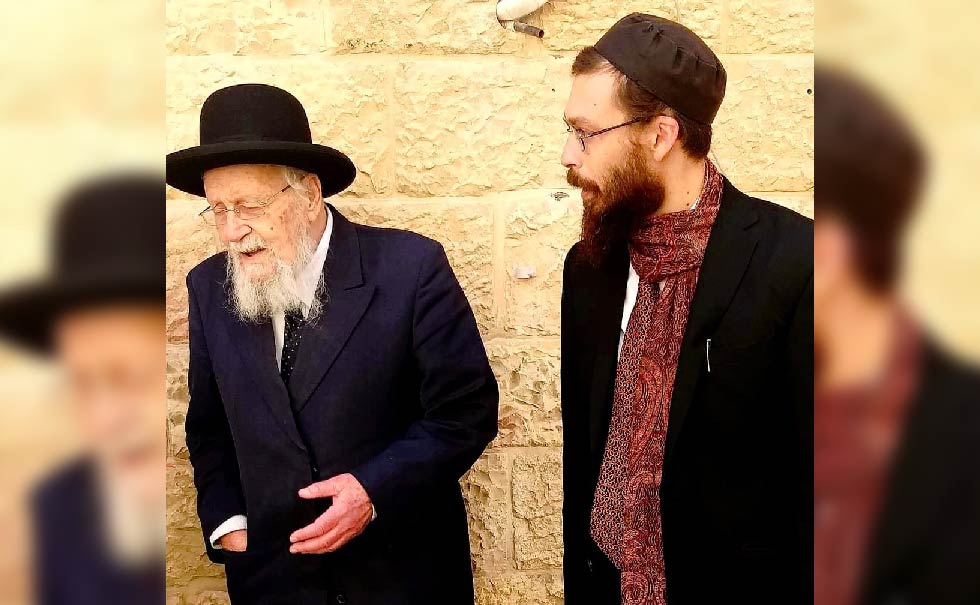Ki Tisa
This weeks Parsha brings into confrontation with an act that will reverberate through our history as one of the darkest moments of our people, as Moshe our teacher ascends to communicate directly, “Face to Face” as the verse teaches [1]:
“וְדִבֶּ֨ר יְהֹוָ֤ה אֶל־משֶׁה֙ פָּנִ֣ים אֶל־פָּנִ֔ים כַּֽאֲשֶׁ֛ר יְדַבֵּ֥ר אִ֖ישׁ אֶל־רֵעֵ֑הוּ”
“Then the Lord would speak to Moses face to face, as a man would speak to his companion…”
With the communication with the Creator of the Universe and reception of the tablets of the law, the newly freed Israelites in their momentary confusion concerning where their leader has gone perform the ultimate Torah prohibition, worship of an idol.
Within this narrative are two important points to consider:
As previously explored within my writings, Humankind excels at not living up to its expectations, it is precisely at the pinnacle of humanity that we manage to let ourselves down, arguably one of the best examples of this is Europe 1920-1930’s Europe, in which industrialization, education and culture was developing rapidly – this is offset by the backdrop of the Polish–Soviet War (1920–21), Russian famine of 1921–22 claimed up to five million victims and other events that triggered political and financial uncertainty across Europe, eventually this would culminate in the 2nd World War in which aside from the atrocities of the holocaust, An estimated total of 70–85 million people perished[2], or about 3% of the 1940 world population [3].
Deaths directly caused by the war are estimated by some sources at between 50–56 million, with an additional estimate of 19–28 million deaths from war-related disease and famine caused by the conflict, civilian deaths totalled 50–55 million. Military deaths from all causes totalled 21–25 million, including deaths in captivity of about 5 million prisoners of war.
We are forced to ask the question of how it is that as society progressed to such an advanced level the result was so catastrophic, similar examples are given with the birth of the nuclear age marked forever with the horrors unleashed in Hiroshima Nagasaki, it has become the unfortunate hallmark of technological advancement that we celebrate not with fireworks and ribbons but bloodshed and war.
As our potential increases – it is simultaneously a double-edged sword, our potential for good cannot be without equal potential for atrocity – in the case of the Israelites, as they moved from the experience of communication with the Divine, they fell to the exact opposite; belief in idols.
Seemingly this result was unexpected [4]:
וַיֹּ֣אמְרוּ לִ֔י עֲשֵׂה־לָ֣נוּ אֱלֹהִ֔ים אֲשֶׁ֥ר יֵֽלְכ֖וּ לְפָנֵ֑ינוּ כִּי־זֶ֣ה | משֶׁ֣ה הָאִ֗ישׁ אֲשֶׁ֤ר הֶֽעֱלָ֨נוּ֙ מֵאֶ֣רֶץ
מִצְרַ֔יִם לֹ֥א יָדַ֖עְנוּ מֶה־הָ֥יָה לֽוֹ:
They said to me, ‘Make us gods who will go before us, because this man Moses, who brought us up from the land of Egypt, we do not know what has become of him.’
וָֽאֹמַ֤ר לָהֶם֙ לְמִ֣י זָהָ֔ב הִתְפָּרָ֖קוּ וַיִּתְּנוּ־לִ֑י וָֽאַשְׁלִכֵ֣הוּ בָאֵ֔שׁ וַיֵּצֵ֖א הָעֵ֥גֶל הַזֶּֽה
I said to them, ‘Who has gold?’ So, they took it [the gold] off and gave it to me; I threw it into the fire and out came this calf.”
Rashi (Rabbi Shlomo Yitzchaki) explains:
ואשלכהו באש: ולא ידעתי שיצא העגל הזה ויצא:
“I threw it into the fire”: I did not know that this calf would come out, but [nonetheless] out it came.
in general the Torah narrative is to blame the mixed multitude (called in Hebrew the ערב רב); The mixed multitude of the Exodus were Egyptians, about whom the Torah states [5]:
לֹֽא־תְתַעֵ֣ב אֲדֹמִ֔י כִּ֥י אָחִ֖יךָ ה֑וּא לֹֽא־תְתַעֵ֣ב מִצְרִ֔י כִּי־גֵ֖ר הָיִ֥יתָ בְאַרְצֽוֹ:
You shall not despise an Edomite, for he is your brother. You shall not despise an Egyptian, for you were (once) a sojourner in his land.
בָּנִ֛ים אֲשֶׁר־יִוָּֽלְד֥וּ לָהֶ֖ם דּ֣וֹר שְׁלִישִׁ֑י יָבֹ֥א לָהֶ֖ם בִּקְהַ֥ל יְהֹוָֽה
Children who are born to them [in] the third generation may enter the assembly of the Lord.
The exclusion of Egyptians from the community of Israel was only temporary, for three generations. Presumably within that span of time the Egyptians would have acculturated and integrated themselves into the Israelite people in a permanent way.
The Erev Rav is an idea found regularly throughout the Midrashic sources in examples such as [6]:
משל למלך שעשה שמחה לבנו והרג שונאיו אמר המלך כל מי ששמח לי יבא לשמחת בני וכל מי ששונא לי יהרג עם השונאים, כך האלהים עשה שמחה לישראל שגאלן אמר האלהים כל מי שאוהב את בני יבא וישמח עם בני, הכשרים שבמצרים באו ועשו פסח עם ישראל ועלו עמהם, שנא’ (שמות יב) וגם ערב רב עלה אתם, וכל מי שרצו שלא יגאלו ישראל מתו עם הבכורים, שנאמר (תהלים עח) ויך כל בכור במצרים.
This is analogous to a king who throws a party for his son and kills his enemies. The king says: “Anyone who is happy for me, come to my son’s party. And anyone who hates me will be killed with my enemies.” Thus did God throw a big party for the Israelites when he redeemed them. God said: “Anyone who loves my son should come and celebrate with my son.” The good Egyptians came and participated in the Paschal offering with the Israelites, and left with them, as it says [7]:
וְגַם־עֵ֥רֶב רַ֖ב עָלָ֣ה אִתָּ֑ם וְצֹ֣אן וּבָקָ֔ר מִקְנֶ֖ה כָּבֵ֥ד מְאֹֽד:
“And also, a great mixed multitude went up with them, and flocks and cattle, very much livestock..”
All those who did not want Israel to be redeemed died with the firstborn, as it says [8]:
וַיַּ֣ךְ כָּל־בְּכ֣וֹר בְּמִצְרָ֑יִם רֵאשִׁ֥ית א֜וֹנִ֗ים בְּאָֽהֳלֵי־חָֽם
“And he struck down all the firstborn among (i.e., along with) them Egyptians, the first fruit of their strength in the tents of Ham.”
Today a great emphasis is placed by some Torah approaches on blaming the Erev Rav for a whole host of modern problems, it is rare that the truth of its existence as a literary device is even mentioned and many employ a rather literal approach to the idea and apply it liberally to almost every circumstance, this approach even appears within the Talmud as a kind of slur [9]:
ואמר רב נתן בר אבא אמר רב: עתירי בבל יורדי גיהנם הם. כי הא דשבתאי בר מרינוס אקלע לבבל, בעא מנייהו עסקא – ולא יהבו ליה. מזוני מיזן – נמי לא זינוהו, אמר: הני מערב רב קא אתו, דכתיב ונתן לך רחמים ורחמך, כל המרחם על הבריות – בידוע שהוא מזרעו של אברהם אבינו, וכל מי שאינו מרחם על הבריות – בידוע שאינו מזרעו של אברהם אבינו.
Rav Nathan bar Abba said in the name of Rav: “The wealthy [of Israel] of Babylonia will be going to Gehennom.” When Shabtai bar Marinus came to Babylon, he looked for work but could find none. He asked for food, but no one fed him. He (Shabtai bar Marinus) said regarding them: “They must be descendants of the Erev Rav, for it says [10]:
…וְנָֽתַן־לְךָ֤ רַֽחֲמִים֙ וְרִֽחַמְךָ֣ וְהִרְבֶּ֔ךָ כַּֽאֲשֶׁ֥ר נִשְׁבַּ֖ע לַֽאֲבֹתֶֽיךָ…
“and grant you compassion to make you compassionate”
Anyone who has compassion on people, it is known that he is a descendant of our father Abraham, and anyone who does not have compassion on people, it is known that he is not a descendant of our father Abraham.”
There is however another approach, the Israelites did not rush to do “evil” as we might now understand it, in the lack of direction and Torah they simply reverted to their previous cultural paradigm:
Apis was the important and highly regarded bull deity of ancient Egypt. His original name in Egyptian is approximated to be Api, Hapi, or Hep (Apis is the Greek name).
He is not, however, associated with the god Hapi/Hep who was linked to the inundation(the act of intentionally flooding land that would otherwise remain dry, for military, agricultural, or river-management purposes) and is depicted as the god of the river: He was originally a god of fertility, then the herald of the god Ptah but, in time, became to be considered a Ptah incarnate (He was also, in some eras, depicted as the son of Hathor and was closely associated with her goodness and bounty), Ptah is important in terms of our understanding as he was a creator god who brought the world into being via the mechanism of speech [11] and like many of the Egyptian gods his iconography was frequently interchangeable.
One of the most important events the bull of Apis participated in was the Heb-Sed Festival, held every thirty years of a king’s reign to rejuvenate him physically.
The Heb-Sed Festival included several physical acts of prowess that the king would perform to show he was still fit to serve the gods and the people. The bull, from earliest times, had been associated with the king and monarchical power, and so the Apis bull would walk beside the king as a show of divine approval. At the conclusion of the festival, when the people were invited to a communal feast in honour of the king, the Apis bull would remain in the king’s presence as a continual reminder of power and virility.
Perhaps the best-known event was the leaping over the bull ceremony which is recorded in hieroglyphs in several locations. Most notably at the Serapeum of Saqqara in the ancient city of Memphis is the location where when an Apis died it was at least partially consumed and its remains ceremonially mummified [12].
Perhaps it is possible to suggest that the Israelite worship of the Golden Calf may have been a mirror of this process:
With no leader (Pharaoh) in sight, the only conceivable solution was to utilize the ceremony associated with the rejuvenation of the King – This frames the act as a much deeper sin, that of casting off the newly emerged Israelite identity in favour of being Egyptian.
Idols are the symbol of man made religion – we fashion ourselves the beliefs, customs, practices and create mythologies as we see fit – they believe what we do, care about the thing we care about and ultimately permit the desires of our heart – in the case of the Golden Calf the argument is made strongly by Chazal that this was for the desire of immorality.
It is true that to an extend we are all guilty of making our own unique idols of religion and philosophy (from either a religious or atheistic perspective) to justify our own perspectives and beliefs, we are able to read any narrative we prefer into ancient texts, we can implant our interpretation or even read a later replacement narrative or theology into an earlier text (as we find often with Christian approaches to the Tanach) – we as humans seldom find a lack of evidence for our cause.
What makes Torah Judaism so powerful is that where [13] “theology divides, law unifies”, we may indeed possess as a people various approaches to our theology, mythology and understanding of the Torah, however we are committed to upholding; this is especially true of Sephardic communities that did not suffer from the same divisive polemic as within Ashkenazi Judaism; although the Sephardim did disagree theologically, especially in terms of their clear divide between Rationalist and Mystical approaches to the Torah, they did not as Ashkenazim did split into Orthodox, Reform and Conversative camps – whilst some region variance and differing of Custom (Minhagim) is found, in general the approach to the Law as divine and necessary was never lost.
As Jews we are not able to free ourselves from what has transpired before us, we arrive at our Jewish identity with the weight of our collective identity upon us, we live in a shadow of the Golden Calf until this very day and despite the very evident fact that humans have historically failed at every opportunity to collectively seek good and achieve greatness we cannot allow ourselves the luxury of a lack of faith in Humanity, our entire ethos is rooted in the belief that mankind can indeed be great and that we can as a society reach an idyllic, peaceful and moral civilization, we can reach the days that were foretold by our prophets, may they come speedily.
Shabbat Shalom!
Rabbi Jonathan Goldschmidt 2022 ©
________________________________________
[1] Shemot/Exodus: 33:11
[2] The Times Atlas of the Second World War p204,205
[3] “International Programs – Historical Estimates of World Population – U.S. Census Bureau”. 2013-03-06.
[4] Shemot/Exodus: 32:23-24
[5] Devarim/Deuteronomy: 23:8-9
[6] Shemot Rabbah 18:10
[7] Shemot/Exodus:12:38
[8] Tehillim/Psalms: 78:51
[9] Talmud Beitzah: 32b
[10] Devarim/Deutoronomy 13:18
[11] Allen, James P. (1988). Genesis in Egypt:
The Philosophy of Ancient Egyptian Creation Accounts.Yale Egyptological Study, p. 38–41
[12] Dodson 2005, p. 77.
[13] Attributed to Rabbi Joseph Faur (1934-2020)




